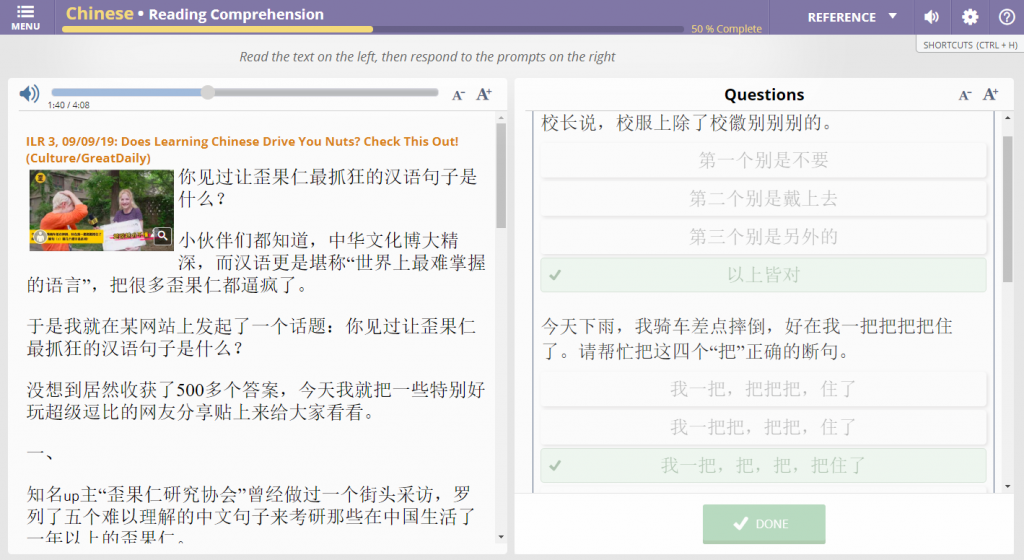CL-150 Cohort Lesson of the Month – September 2019 Posted by meaghan on Sep 30, 2019 in Cohort Lesson of the Month, For Learners, For Program Managers
As of September 2019, there are more than 7,870 Cohort lessons published in the CL-150—and counting. Let’s take a look at one lesson each month to find out how language professionals are maintaining proficiency on the job with Cohorts.
What are CL-150 Cohorts?
If you’re not familiar, CL-150 Cohorts are weekly lesson streams designed specifically for USG language professionals maintaining proficiency on the job. Each lessons provides a 2-hour “workout” at a specific ILR level, based on a professionally relevant, authentic source.
Learn more about CL-150 Cohorts and try a sample lesson here.
Cohort Lesson of the Month
This month’s featured lesson comes from the Mandarin Chinese ILR 3 Cohort: ILR 3, 09/09/19: Does Learning Chinese Drive You Nuts? Check This Out! (Culture/GreatDaily)

All Cohort lessons are based on authentic sources, created by native speakers for native speakers. Our Cohort authors put a lot of care and creativity into their search for sources so that sustainers are immersed in the same information streams as their native speaking counterparts, including news reporting, podcasts, YouTube videos, literature, and even advertisements.
Guaysheen, the author of this month’s featured lesson, took inspiration from a very unique authentic source: XiaoAi, a Chinese voice command app.
“I didn’t think Siri and Google could tell me Chinese jokes, so I got XiaoAi to tell me some jokes. Among them I found this challenging sentence full of homonyms: ‘用毒毒毒蛇会不会被毒死呀?’ (Will poisonous snakes be poisoned to death?) I thought this would be a good starting point for an ILR 3 lesson. It uses simple words, but even native Chinese speakers get confused at first glance. It’s kind of like the English, ‘can you can a can as a canner can can a can?’”
In the sentence, Chinese learners see the character 毒 used as a noun, verb, and adjective all within the same sentence. Guaysheen used this idea as the basis for a lesson, but the next step was not to write something, because Cohort lessons are only built around authentic, native content. Instead Guaysheen went looking and tracked down an authentic article and street interview video in which Chinese learners discuss the most difficult sentences they can think of:
“I am very pleased that I found a perfect video for the lesson. This is a tough lesson but tons of fun to learn. The vocabulary is simple, but if they don’t get the grammar right, they won’t get the meaning right either. The text is the mix of grammar, double meanings, triple meanings, intonation, and punctuation.”
It’s an ideal authentic source: in addition to being fun and current, it allows Chinese learners to practice listening comprehension with many different voices and reading comprehension with tricky grammar and nuances. And since most Cohort lessons are built around recent articles on economics and international affairs, it’s a nice change of pace for learners.
Maintaining Chinese proficiency? Complete this month’s featured lesson and see if you can conquer the toughest Chinese sentences.
Sustaining another language? Explore our available Cohorts and stay tuned for next month’s featured lesson for more behind-the-scenes action from our Cohort team.


